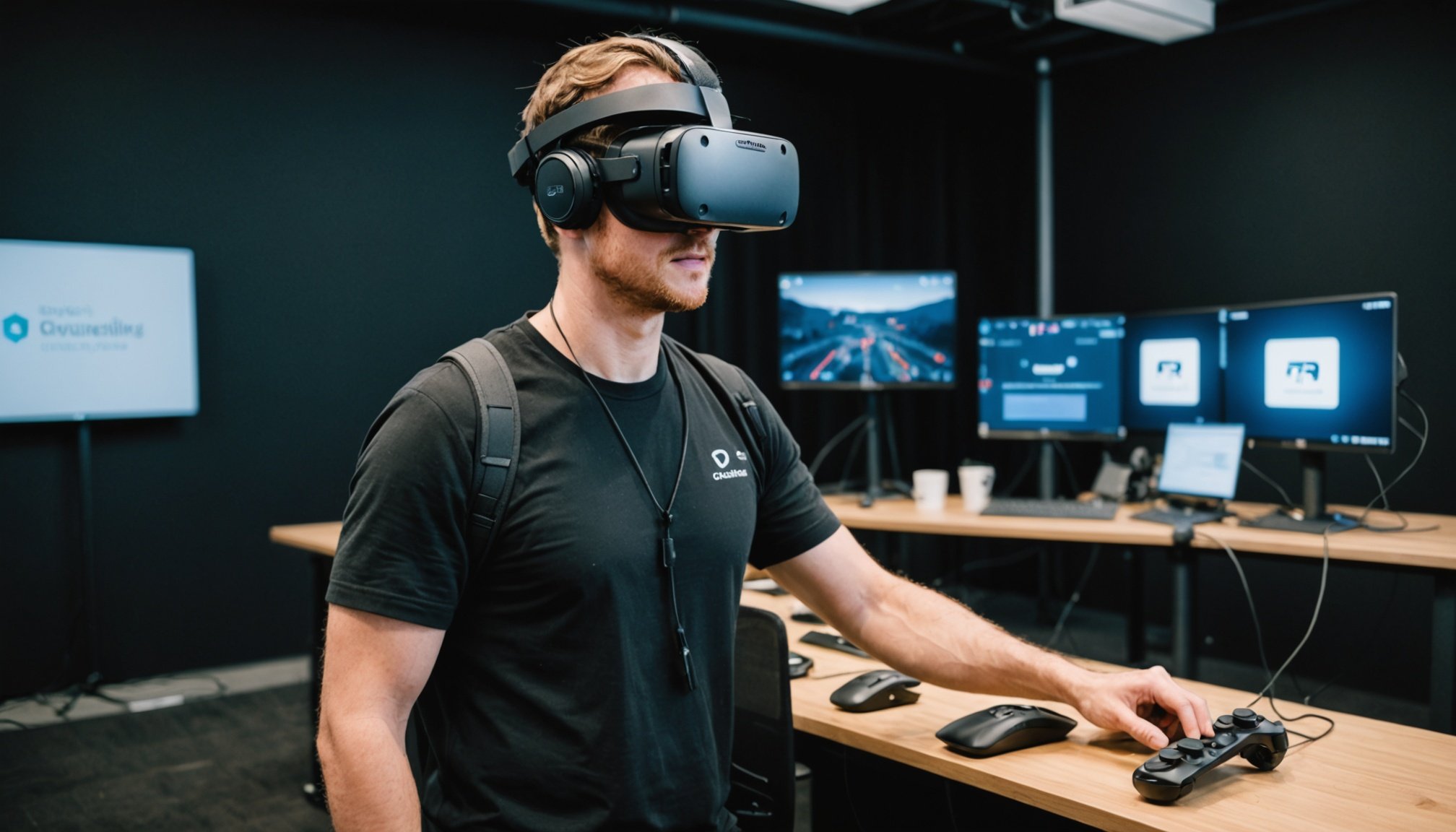Technical Challenges in Hybrid VR and AR Game Development
Developing for both VR and AR platforms presents numerous technical challenges. The most significant issues often relate to VR performance and AR compatibility. VR demands high performance optimization to maintain smooth and immersive experiences. This challenge arises because any lag or stutter can break immersion, an essential component of virtual reality.
Understanding and addressing device limitations is crucial. VR hardware typically requires high processing power and graphical capabilities, while AR strives to blend virtual elements seamlessly with real-world settings. This discrepancy necessitates thoughtful design to account for varying device capabilities. Optimizing for VR generally involves fine-tuning graphical settings and utilizing efficient rendering techniques like foveated rendering.
This might interest you : Elevate your forest adventure: essential techniques for creating lifelike foliage in exploration games
On the AR side, compatibility issues can complicate development. Ensuring that applications function across a range of devices with different camera capabilities and processing power adds complexity. Strategies like adaptive resolution scaling and efficient resource management become vital.
Hybrid development also involves striking a balance between these needs. Developers must create scalable content that can cater to both high-end VR headsets and the more varied spectrum of AR devices. Emphasizing versatility and robust testing across platforms can mitigate these technical hurdles.
In parallel : Overcoming challenges: integrating authentic physics in space simulation games
User Experience Design Considerations
Designing for virtual reality (VR) and augmented reality (AR) requires a keen understanding of user experience. The aim is to create interfaces that are not only intuitive but also engaging. Best practices highlight the importance of minimizing complexity in controls while maintaining the immersive nature of VR and AR. This balance ensures users are not overwhelmed, leading to a seamless interaction.
One crucial factor in VR/AR design is maintaining user comfort—particularly, avoiding motion sickness. This can be addressed by ensuring a stable frame rate and minimizing rapid movements in the virtual environment. Additionally, placing controls within easy reach and creating natural interaction patterns contributes significantly to user comfort.
Understanding user preferences and behavior is essential in improving UX for VR and AR. Gathering data on how users interact with these environments can shed light on preferred navigation styles and control schemes. This data-driven approach allows designers to tweak interfaces, ensuring they meet user needs more precisely.
In essence, crafting an effective AR user interface demands a user-centric approach, considering both the physical and psychological aspects of the immersive experience. It is about striking a delicate balance, ensuring both engagement and ease of use.
Platform Integration and Cross-Compatibility
In the world of cross-platform development, understanding the intricacies of various platforms is crucial. Major platforms like PlayStation, Xbox, and PC each have unique requirements and support for VR and AR ecosystems. These differences necessitate careful planning to ensure a seamless user experience across devices.
Developers often rely on tools and frameworks to overcome these hurdles. Unity and Unreal Engine are popular choices due to their versatile nature. They provide built-in capabilities that streamline the migration of games and applications from one platform to another. These tools enable developers to write code once and deploy it across myriad devices, saving time and resources.
Case studies of successful hybrid game integrations highlight the possibilities that platform integration offers. For instance, a game initially developed for the Xbox is adapted to cater to the PlayStation audience without significant loss in fidelity or functionality. This adaptability is facilitated by leveraging cross-platform tools to meet the specific requirements of each system.
Employing the right strategies ensures that games not only work but thrive on multiple platforms, which maximises reach and enhances user satisfaction. Understanding platform-specific needs while utilising modern development frameworks is key to achieving cross-platform success.
Performance Optimization Techniques
To ensure optimal performance in VR and AR applications, high frame rates and low latency are critical. Achieving this demands strategic optimization techniques.
Profiling and Metrics
Start by using profiling tools to identify bottlenecks. Common tools like NVIDIA Nsight and AMD GPU PerfStudio help measure VR frame rates and AR latency, offering insights into potential areas of improvement.
Techniques to Boost Performance
-
Culling: Remove unseen objects from the rendering process to maintain high frame rates. This conserves resources, preventing game lag.
-
Level of Detail (LOD): Adjust the complexity of 3D models based on distance from the viewer, reducing processing demands.
-
Asynchronous Reprojection: Works to correct for missed frames, smoothing visual experience. Vital for decreasing perceived latency.
Real-World Examples
In the gaming industry, Unity and Unreal Engine utilise these strategies by incorporating LOD systems and culling mechanisms, essential for real-time rendering. Google’s ARCore optimises performance by predicting user movement, effectively reducing AR latency and enhancing smoothness.
Focusing on these optimization techniques ensures VR and AR applications operate smoothly, delivering immersive experiences without compromising performance.
Lessons Learned from Industry Experts
Understanding the landscape of VR/AR development necessitates tapping into the expert insights from industry trailblazers. Through numerous interviews with industry leaders, several valuable lessons have emerged, particularly in overcoming the common obstacles faced in this rapidly evolving field. One key takeaway is the importance of embracing collaborative approaches and maintaining flexibility as technologies advance.
When reviewing pivotal industry case studies, several trends stand out. For instance, successful VR/AR projects often emphasize user-centered design, ensuring that the technology enhances rather than hampers user experience. These case studies add depth, illustrating the real-world applications and benefits, while highlighting the pitfalls to avoid.
Emerging trends within VR/AR development include the integration of artificial intelligence and the potential for broader adoption in various sectors beyond gaming, such as education and healthcare. However, these advancements come with challenges, such as ensuring user privacy and meeting the demand for high-quality, affordable hardware.
Future challenges are abundant, as the demand for innovative and immersive experiences grows. Navigating these will require continued research and adaptation, grounding future developments in the insights gained from both successful and challenging industry cases. Staying informed and agile will be key.






